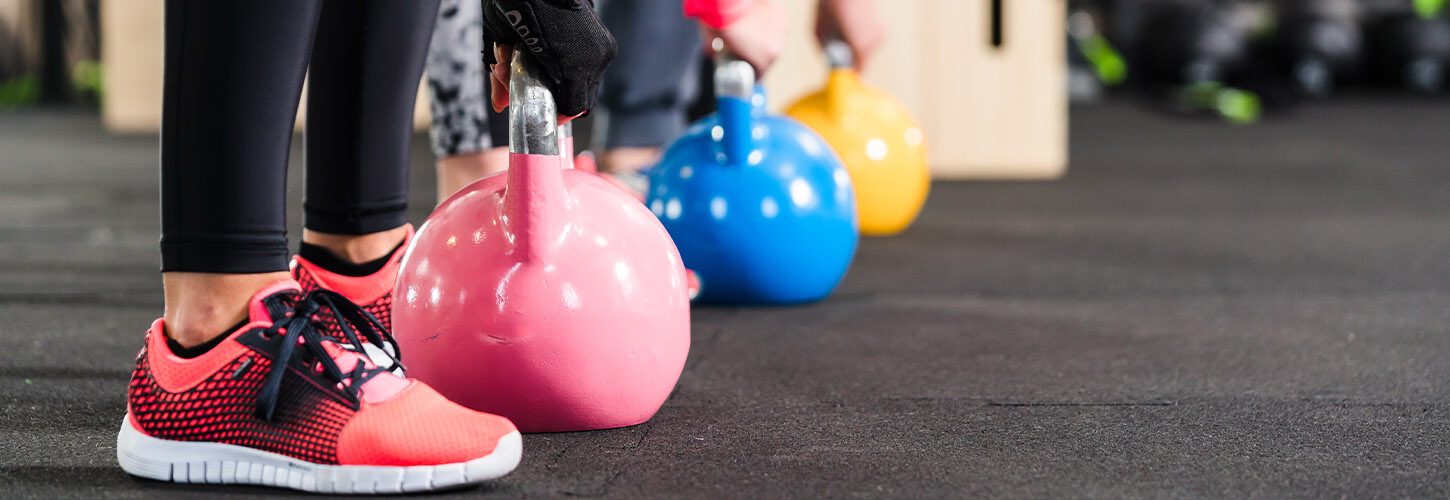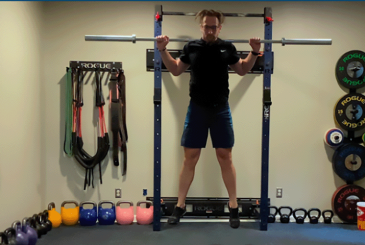In the final article of this series, Sam Boylett-Long discusses training for power and how it builds on from the other resistance training in the year
Power can be described as a muscle or muscle group’s ability to produce force under a time constraint, or force divided by time, hence why power and rate of force development (RFD) go hand-in-hand. It’s the rate of which force can be applied.
Simply being strong or forceful doesn’t always transfer to being powerful. It requires a dedicated block of training centred around the speed of muscular contraction and initiating intent to move yourself or an external object quickly.
In the below graph we have a typical athlete’s force profile in blue, a strength-trained athlete in green and a speed/power-trained athlete in red. Which athlete is stronger or able to produce the most force at the dotted line (200 milliseconds)? Clearly, the athlete represented by the red line at the intersection of the dotted line but the green and blue athletes are both stronger without the time constraint. This nicely highlights that we can manipulate the type or style of training to illicit a change to how we are producing force.
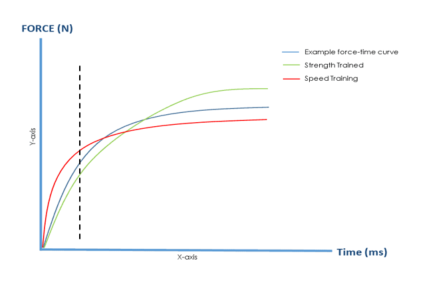
Typical periodisation sees power development after strength as we’ve already gone through the process of increasing the number of motor units, changing the structure and architecture of the muscle through the strength block. During a power phase, we then need to increase the neuromuscular system’s ability to stimulate motor units, rapidly producing force.
Whilst the exercises selected for a programme should reflect the demands of rowing, the loading for an exercise where the primary goal is power development shouldn’t be greater than 70% one rep max (1RM). Most guidelines would advocate the use of ~40% 1RM across loaded jump variations. For example, if my back squat 1RM is 100kg then performing working sets of 40Kg on a barbell squat jump/trap bar squat jump would be sufficient to drive neural changes underpinning power development.
The main message for this block of training is centred around an athlete’s intent to move a given load during each exercise as quickly and explosively as possible. Even under accumulative or residual fatigue it is paramount to the development of power qualities that an athlete has the right mindset and attacks each lift.
Example training session for strength maintenance whilst targeting power development as the primary goal:
Throughout each block of training we want to minimise losses in other areas of strength performance. For example, just because this is a power block, doesn’t mean you want to forget about those strength base qualities, especially as they underpin the power characteristics.
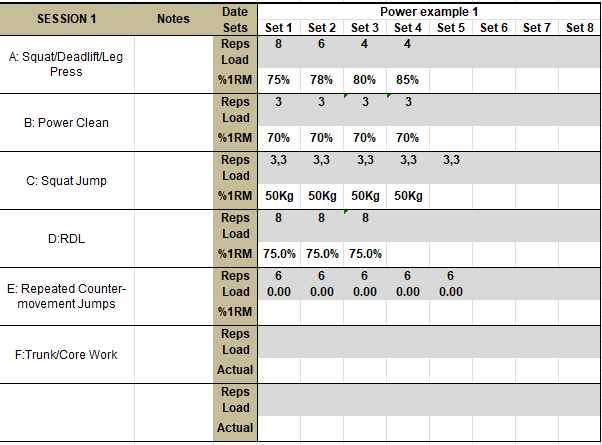
In this first example, I’ve provided a lower body themed session which I’d suggest gets completed twice a week, equally spaced throughout the training week. The second session should look similar as the goal is power/force expression in the lower limb given the contribution of the knee and hip extensors in the rowing stroke. However, the exercise selection could be changed in the second session to reduce monotony over the training block if the focus is rapid knee and hip extension. This would include several loaded and unloaded jump variations and Olympic lift derivatives.
In terms of the specific physical adaptations, we want to stimulate changes in the nervous system, specifically motor unit recruitment, rate of force development, rate coding and neural drive which will improve how quickly we are able to recruit motor units and apply a large effective force specifically to the footplate.
Second example session:
In this second example I’ve provided a mixed upper and lower body session programme.
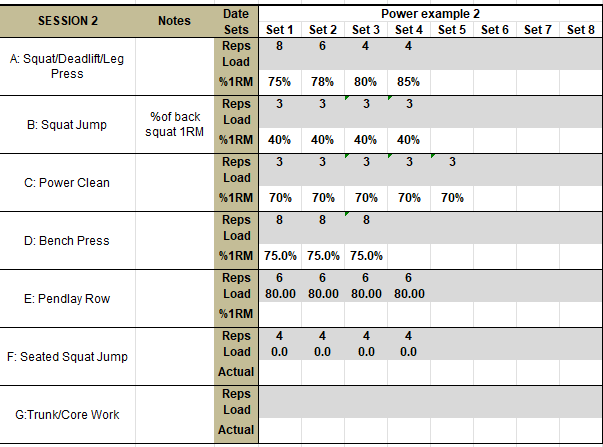
It is important we hold onto other strength qualities whilst going through blocks of training with a different primary focus! You can structure this in many ways throughout the week depending on the number of sessions you are able to complete each cycle. Ideally, I’d advocate a minimum of two sessions per week but three offers a great deal of flexibility in terms of the dose you get each week e.g. Monday and Thursday or Monday, Thursday and Saturday for three sessions a week would be preferable.
This will completely depend on how you plan to structure your macrocycle based on your training age and goals. As previously mentioned, improving power requires diligence around rest periods and maximum intent which can be mentally and physically taxing. Specifically, the neuromuscular fatigue, time and energy required to see improvement. I would suggest starting some lower-level ballistic training such as unloaded jumps through mid-late winter, increasing towards competition. If you’ve followed a traditional periodisation approach, then I’d suggest beginning the power block in late February/early March.

We hope you enjoyed this series and took something away from it. You can find the three previous articles in this series here 1: Everything you want to know about resistance training, 2: Training for hypertrophy (increased muscle mass), 3: Training for strength.


